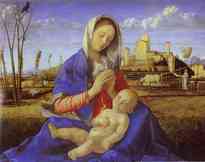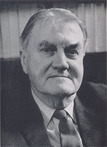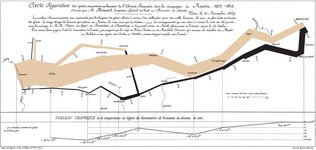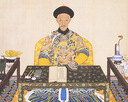day by day: a blog
October 28, 2008
thinking blue

Blue is the bridge colour marking the point of transition into mysteries, into the intangible. At the two extremes of non-illumination and illumination, the world turns blue-ish. In the shadowy recesses of a church, blue shines as other colours fade or dim. On a bright, summer day objects gleam blue.
"At very low light levels, blue and green objects appear brighter than red ones compared with their relative brightness in stronger illumination, an effect known as the Purkinje shift for its discoverer, the Czech physiologist Jan Evangelista Purkinje. At higher levels of illumination, there is a related shift in hues, called the Bezold-Brücke effect, such that most colours appear less red or green and more blue or yellow as the intensity of illumination increases." -- Encyclopedia Britannica
Blue is the colour of Heaven, of purity and of the Virgin Mary.
The glass-blue days are those
When every colour glows,
Each shape and shadow shows.
Blue be it: this blue heaven
The seven or seven times seven
Hued sunbeam will transmit
Perfect, not alter it.
Or if there does some soft,
On things aloof, aloft,
Bloom breathe, that one breath more
Earth is the fairer for. -- Hopkins
But wherever there is blue, there is also masculine sentimentalism and vanity.
"Une jeune femme, en robe de mérinos bleu garnie de trois volants, vint sur le seuil de la maison pour recevoir M. Bovary.... Vus de si près, ses yeux lui paraissaient agrandis, surtout quand elle ouvrait plusieurs fois de suite ses paupières en s'éveillant; noirs à l'ombre et bleu foncé au grand jour, ils avaient comme des couches de couleurs successives, et qui plus épaisses dans le fond, allaient en s'éclaircissant vers la surface de l'émail.... Mais jamais il ne put la voir en sa pensée, différemment qu'il ne l'avait vue la première fois, ou telle qu'il venait de la quitter tout à l'heure." -- Flaubert
Flaubert dressed Emma Rouault in blue; in "The Voice" Hardy drew the Bovary-parable into his web of meanings when he dressed his own "Emma" (Emma Gifford, at St. Juliot in 1870) in the same colour:
Let me view you, then,
Standing as when I drew near to the town
Where you would wait for me: yes, as I knew you then,
Even to the original air-blue gown!
Blue, like folly and love, is forever.
"Wearing a navy blue dress from the Gap, Ms. Lewinsky attended the radio address at the President's invitation…. The President told her to wait a moment, as he had presents for her. As belated Christmas gifts, he gave her a hat pin and a special edition of Walt Whitman's Leaves of Grass." -- Starr
Posted by njenkins at 11:09 PM | Comments (0)
October 26, 2008
chez maximes
 [photograph by Billett Potter]
[photograph by Billett Potter]
Where does a scholarly passion come from? And how does it relate to your life?
My grandfather taught French literature, especially "classical" -- that is, 17th and 18th century -- prose and drama, at Oxford. He always seemed to me the gentlest, most chivalrous and spiritual of men. I remember him as very tall, very calm, very quiet, and, more often than not, as smiling benignly.
Whenever, as a child, I went to stay with him our asymmetric (him lofty, me stumpy) morning progresses along St. Giles were heavily punctuated by moments when he slowed and raised his hat as a lady passed. (He was the last Englishman of my acquaintance who, as a matter of course, both wore a hat in the street and lifted it off briefly in the presence of numerous women, apparently whether or not he knew the people in question closely.) I also recall a careful and only moderately unironic explanation to me of the difference between "un homme gentil" and a "gentilhomme".
I loved his humour, his fastidiousness of dress, his gentleness. But, when I grew up a bit, his ethical values also came to seem impeccable. As a young man, he had been sent as a representative of the Congregationalists in Britain to attend Martin Niemöller's trial for offenses against the State before a "Special Court" in Germany in March 1938. The Nazis refused him admission. In the 1960s he and my grandmother were active in the British wing of the campaign against apartheid.
After my grandmother died, he spent a little less than a year grieving for her. Much of that time, the book propped open next to his cold suppers, he devoted to reading Thomas Hardy's poetry, including "Poems of 1912-13", Hardy's elegies for his wife. Then he followed her into oblivion.
Yet -- the things he had written about.... Take an example. One of his books is La Rochefoucauld: His Mind and Art (1969). Have you read La Rochefoucauld? His prose is like an acid: "Les vertus se perdent dans l'intérêt comme les fleuves se perdent dans la mer". It is Nietzsche before Nietzsche. "Dans toutes les professions chacun affecte une mine et un extérieur pour paraître ce qu'il veut qu'on le croie. Ainsi on peut dire que le monde n'est composé que de mines."
I love my grandfather's memory; I will never forget him. To me he will always be "past love, praise, indifference, blame." Still, the apparent cleavage between the man who played and the scholar who wrote is striking to me. Do our words and our characters ever truly unite? I wonder sometimes whether I, or anyone else, knew my grandfather entirely? Or whether, so to speak, his work knew him? And then I wonder whether anyone -- perhaps, my as-yet unborn grandchildren -- will ever ask the same kinds of question about me? Will they ponder languidly: "Where was the poetry in him?" There are no easy answers.
Posted by njenkins at 06:52 PM | Comments (0)
October 24, 2008
minard's eternal silences
 [Image: Charles Joseph Minard, "Carte figurative des pertes successives en hommes de l'Armée Française dans la campagne de Russie 1812-1813"]
[Image: Charles Joseph Minard, "Carte figurative des pertes successives en hommes de l'Armée Française dans la campagne de Russie 1812-1813"]
Yes, one thing does lead to another. It is impossible to draw up a map of any kind (as I did yesterday in "Homage to War and Peace") concerning the invasion of Russia by the French Army during 1812 without invoking memories of one of the greatest of all information graphics, the "Figurative Map of the Successive Losses of Men in the French Army during the Campaign in Russia 1812-1813" (1869).
The "Map" was created by the civil engineer and cartographer Charles Joseph Minard (1781-1870) after he had retired from a position as a general inspector in the French government's "Corps des Ponts". Published on the eve of the Franco-Prussian War, less than a year before Minard's death, this potently lucid graphic work, in the words of one of Minard's obituarists, "inspires bitter reflections on the cost to humanity of the madnesses of conquerors and the merciless thirst of military glory" (Annales des ponts et chaussées, 1871). The great chronophotographer Étienne-Jules Marey said that Minard's chart "defies the pen of the historian in its brutal eloquence."
The "Figurative Map" dramatizes statistically the period between 24 June 1812 when, using Minard's figures, some 442,000 of Napoleon's troops crossed the Nieman and entered Russia to mid-December of the same year when what still passed for the French Army, now reduced in number to some 10,000 or so shattered souls struggled back across the Nieman's ice. (Modern estimates suggest that somewhere between half a million and 690,000 French and allied troops surged into Russia during the summer of 1812 and that about 400,000 of them died there in the next six months.)
Minard's work tracks three variables: 1) the size of the army at any given point; 2) its location and the direction it was moving in; and 3) the declining temperatures that took hold during the Army's apocalyptic disintegration and retreat out of Russia, which occurred between 19 October and 14 December 1812.
Critics often note the special significance of rivers in Minard's work. The most obvious instance is the sanguinary crossing of the Berezina, which took place in sub-zero temperatures between 26 and 29 November, when troops commanded by Kutuzov, Wittgenstein and Chichagov killed roughly half the remnants of the French Army either in, or on the banks of, the river as it attempted to scrabble across two 100 metre pontoons General Eblé's engineers had cobbled together in spite of frostbite, exhaustion and heavy enemy fire. Minard's black line, "one millimetre for every ten thousand men", shows some 50,000 approaching the Berezina and, with a sudden ugly contraction, some 28,000 departing from it. There is a special pathos in reading a professional bridge engineer's dispassionate graphic account of a human disaster on such a scale taking place where a river is crossed.
Given such a masterwork, all accurate observations, even critical ones, are a form of implicit celebration. Here are mine, largely inspired by the "Map"'s silences and occlusions.
- The name "Napoleon" appears nowhere on the "Map". Nor is their any indication of one of the most momentous and (in Tolstoy's eyes, shameful) actions Napoleon performed during the entire campaign: his abandonment of his starving and freezing soldiers and his secretive flight back to France which began on 5 December 1812.
- Battles and skirmishes are virtually invisible on Minard's "Map". Instead, he presents an image of the river-like, quasi-natural, and therefore morally innocent, flow of the French Army into and out of Russia.
- Time is not treated with rigour or on a consistent scale. It took the French Army slightly more than two and a half months to march from the Nieman to Moscow (Napoleon entered the Russian capital on 14 September 1812) but slightly less than two months to retreat from Moscow to the Nieman (Napoleon withdrew from Moscow on 19 October 1812). Yet Minard's "Map" allots the same amount of space to two events, the drive into Russia and the drive out, which consumed different amounts of time. The roughly five weeks which the French Army spent in a state of exhausted inertia occupying Moscow are not represented in any legible form.
- The decision to emphasize the temperatures which occurred during the retreat out of the country is complicit with the myth Napoleon himself subsequently promulgated: that he had been beaten by the Russian winter, not by the Russians. It has the further effect of throwing greater emotional weight onto the heroic abjection of the retreat than rather than the brutal aggression of the advance.
- This, itself, is mystificatory: in fact the greatest losses were suffered on the march into Russia and before any large scale combat happened, as typhus, dysentery, starvation, suicide and desertion reduced the French Army from (using Minard's figures) 442,000 to 127,000 before the first major battle, the Battle of Borodino or, as the French called it, "la bataille de la Moskowa", took place on 7 September 1812. Days of heat, rain and dust, not snow and ice, were the conditions under which most of the French soldiers died. One study, by an army academic, notes: "the main body of Napoleon's Grande Armée, initially at least 378,000 strong, diminished by half during the first eight weeks of his invasion before the major battle of the campaign. This decrease was partly due to garrisoning supply centers, but disease, desertions, and casualties sustained in various minor actions caused thousands of losses. At Borodino on 7 September 1812 - the only major engagement fought in Russia - Napoleon could muster no more than 135,000 troops, and he lost at least 30,0005 of them to gain a narrow and Pyrrhic victory almost 600 miles deep in hostile territory. The sequels were his uncontested and self-defeating occupation of Moscow and his humiliating retreat, which began on 19 October, before the first severe frosts later that month and the first snow on 5 November" (Allen F. Chew, "Fighting the Russians in Winter: Three Case Studies"). Although Minard's "Map" allows anyone who looks at it carefully to glean some (but not all) of this information, its semiotics divert attention away from these truths, towards a myth of non-aggressive resilience as the Army withdraws from Russian territory under extremely arduous conditions.
- The "Figurative Map" is profoundly parochial in its treatment of suffering. The most deafening of all Minard's graphic silences concerns Russian death and suffering. In this version of the campaign, only the French die. But a reasonable modern estimate suggests that the Russian Army lost some 210,000 men on their home soil fighting the French and that, in addition, hundreds of thousands of Russians civilians died in the fiery paths carved out by the French through the Russian countryside. Nothing in Minard's beautiful, circumspect graphic lucidity even gestures towards that reality.
Minard's "Figurative Map" is an incomparable piece of graphic rhetoric. But, like all rhetoric, its success lies as much in veiling as in revelation. It was therefore fortunate that in 1869, the same year in which Minard published his gallocentric "Map" of hygienic but "brutal eloquence", Tolstoy righted the balance by completing and publishing the final installment in his ragged, loose, howling, chauvinistic and equally mystificatory epic of Russian suffering. Juxtaposing these two works, image is incommensurate with text. Minard and Tolstoy left us a "firm, French order" pitched against a "quite different", "Russian order of life", a system opposed to a vital anarchy, a cry of the soul to counterpoint the sombre, refined muteness of the spirit.
Tolstoy wrote in War and Peace that "there is no greatness where simplicity, goodness, and truth are absent." So far, so good. But one may also wonder whether there is "greatness" where "simplicity, goodness, and truth" are too visibly and exclusively present. "The Figurative Map" and War and Peace both say, No.
Posted by njenkins at 02:49 PM | Comments (0)
October 23, 2008
homage to war and peace
 [image: Leo Tolstoy, by Ilya Repin, 1901] Today, I finished reading War and Peace. It was "my first time". I feel exhausted, vitalized, frayed, warmed, enervated, elated. And at the moment, it seems to me quite certain that I will never, ever tackle another novel.
[image: Leo Tolstoy, by Ilya Repin, 1901] Today, I finished reading War and Peace. It was "my first time". I feel exhausted, vitalized, frayed, warmed, enervated, elated. And at the moment, it seems to me quite certain that I will never, ever tackle another novel.
In his "Preface" to The Tragic Muse Henry James passionately queened it over Tolstoy, allowing that novels like War and Peace have "life" but wondered "what do such large loose baggy monsters, with their queer elements of the accidental and the arbitrary, artistically mean?" Against the ragged Tolstoyan panorama, James exalted the narrowed chamber of "composition" and pleaded for "a deep-breathing economy and an organic form".
But, to my mind anyway, it is the extraordinary play with indefiniteness, with the heteroclite and the oddly, eerily, inexplicably conjoined which is one of the most artistically moving facets of the book. As an ambiguous whole, Tolstoy's book is akin to those nights of Pierre's in which "real events mingled with dreams" or to those conversations between Pierre and Natasha in which they find their way into each others' minds "in ways contrary to all rules of logic, without premises, deductions, or conclusions, and in a quite peculiar way." For Natasha, the "line of logical reasoning", the counterpart of James's ethos of considered novelistic "composition", is a sign of falsity.
Pierre and Natasha's conversations proceed, "contrary to all the laws of logic and contrary to them because quite different subjects were talked about at one and the same time. This simultaneous discussion of many topics did not prevent a clear understanding but on the contrary was the surest sign that they fully understood one another."
As it is with two of the main characters, so it is with Tolstoy's compounding and intertwining method. The "looseness" of the book is one of its compelling attractions and interests. Perhaps that may explain in part why Tolstoy, as he meditating on the novel switched from a plan to focus on the genesis of the Decembrists of 1825 back to a study of the period between 1805-1812. (Tolstoy was a grandson of one of the main Decembrist leaders, Sergei Volkonsky.) For it was that earlier period which gave his fascination with a novelistic vitality "contrary to all rules of logic" its fullest chance of historical expression.
One of the most obvious characteristics of the period is a melting and destruction of national limits (and correspondingly of the protocols governing what can and cannot be done in war, as of the boundaries to what can and cannot be imagined) as the "storm-tossed sea of European history" seethes and breaks its banks when "the ferment" arises in Paris in 1789, "grows, spreads, and is expressed by a movement of peoples from west to east" and is succeeded, like an ebbing tide by a "countermovement... from east to west." Only a "large loose baggy monster" could be equal to such turmoil. In a sense one could describe the book about the advent of an epistemological disorder which scrambles the boundaries between disparate entities -- "west" and "east", Europe and Russia, rationality and intuition -- and which it is the work of the novel to unscramble and resegregate.
I wondered what I could do to signal how much reading this novel has meant to me. One striking index of the churning, boundary-destroying nature of Tolstoy's book is its supra-national quality. War and Peace ranges bewilderingly widely across the hemisphere. I decided to make a map -- for myself, but perhaps also for others who are grappling with Tolstoyan geography. It is a mundane species of homage, but not a pointless one. Containing some 200 place-markers, the map must be riven with mistakes, large and small; I know I am full of doubts about some of my topographical guesses. But, as a friend of mine is fond of saying, a job that's worth doing is worth doing badly. So here is "my" War and Peace map; I hope it helps.
Posted by njenkins at 10:30 PM | Comments (0)
October 04, 2008
2008, when money burned, laws were abolished, and soldiers died
 [image: Daoguang Emperor (1782–1850)] It is early October in the Year of the Rat. Dispirited, I found myself looking forward to New Year's Eve and suddenly I imagined myself that night, lying alone on the carpet, writing with satisfaction in a notebook: "Moby-Dick, Great Expectations, Little Dorrit, Middlemarch, War and Peace, Anna Karenina, Madame Bovary -- a good year."
[image: Daoguang Emperor (1782–1850)] It is early October in the Year of the Rat. Dispirited, I found myself looking forward to New Year's Eve and suddenly I imagined myself that night, lying alone on the carpet, writing with satisfaction in a notebook: "Moby-Dick, Great Expectations, Little Dorrit, Middlemarch, War and Peace, Anna Karenina, Madame Bovary -- a good year."
Posted by njenkins at 11:50 PM | Comments (0)
With the exception of the interspersed quotations, all writing © 2007-10 by Nicholas Jenkins [back]